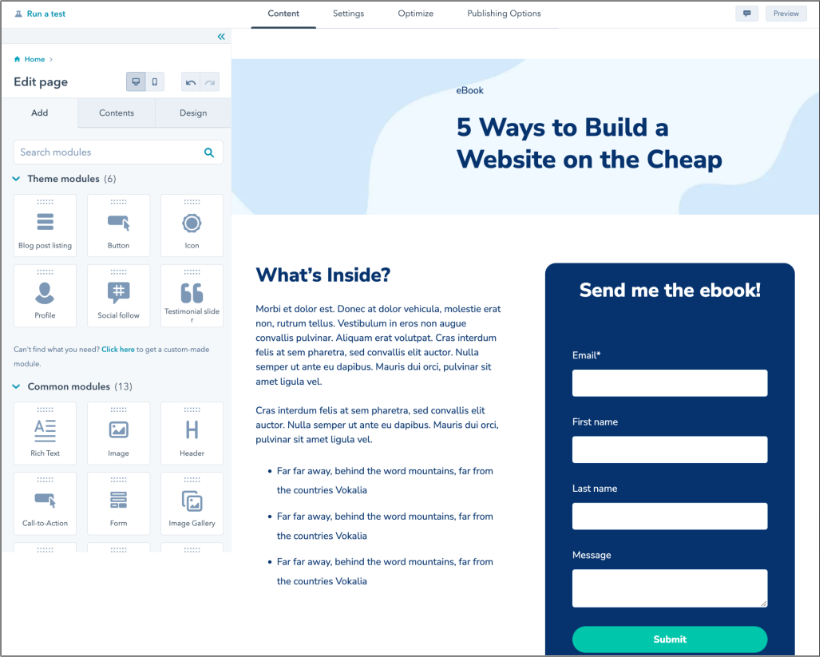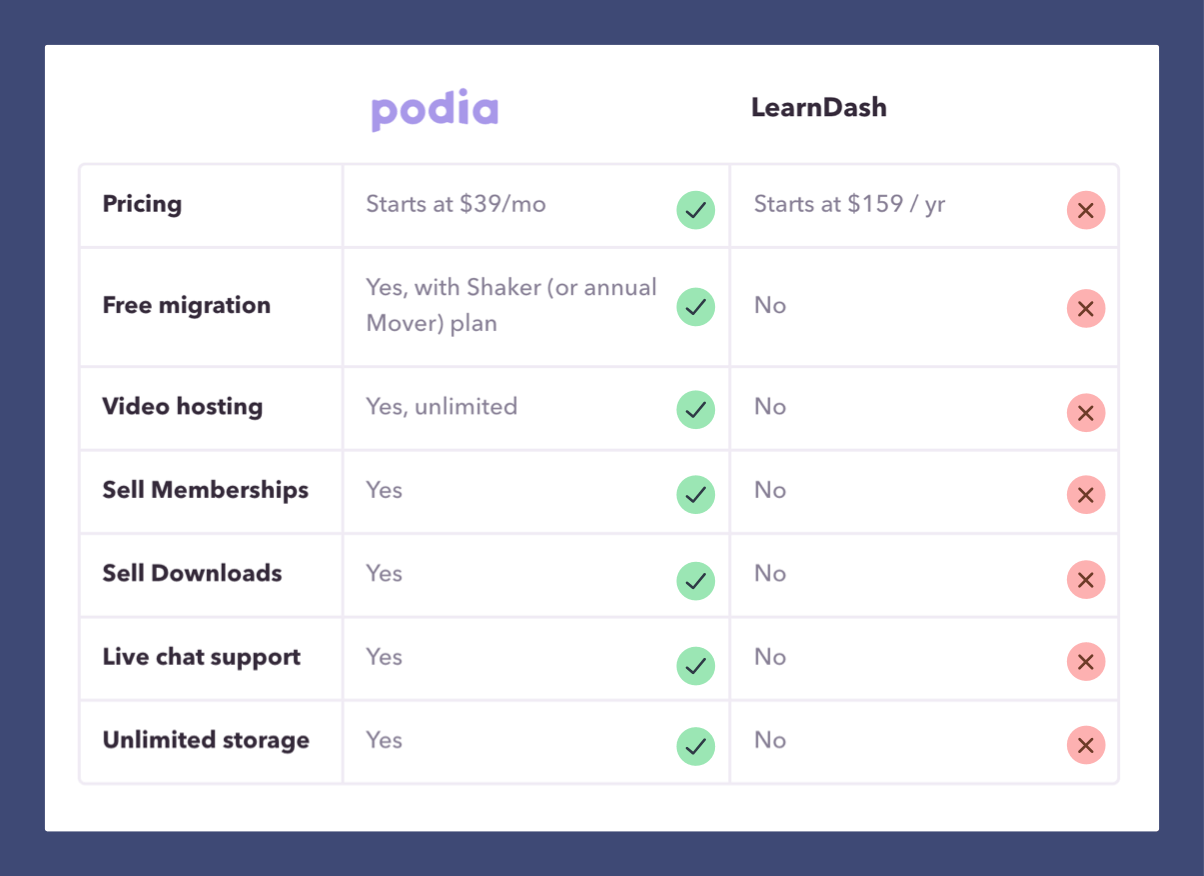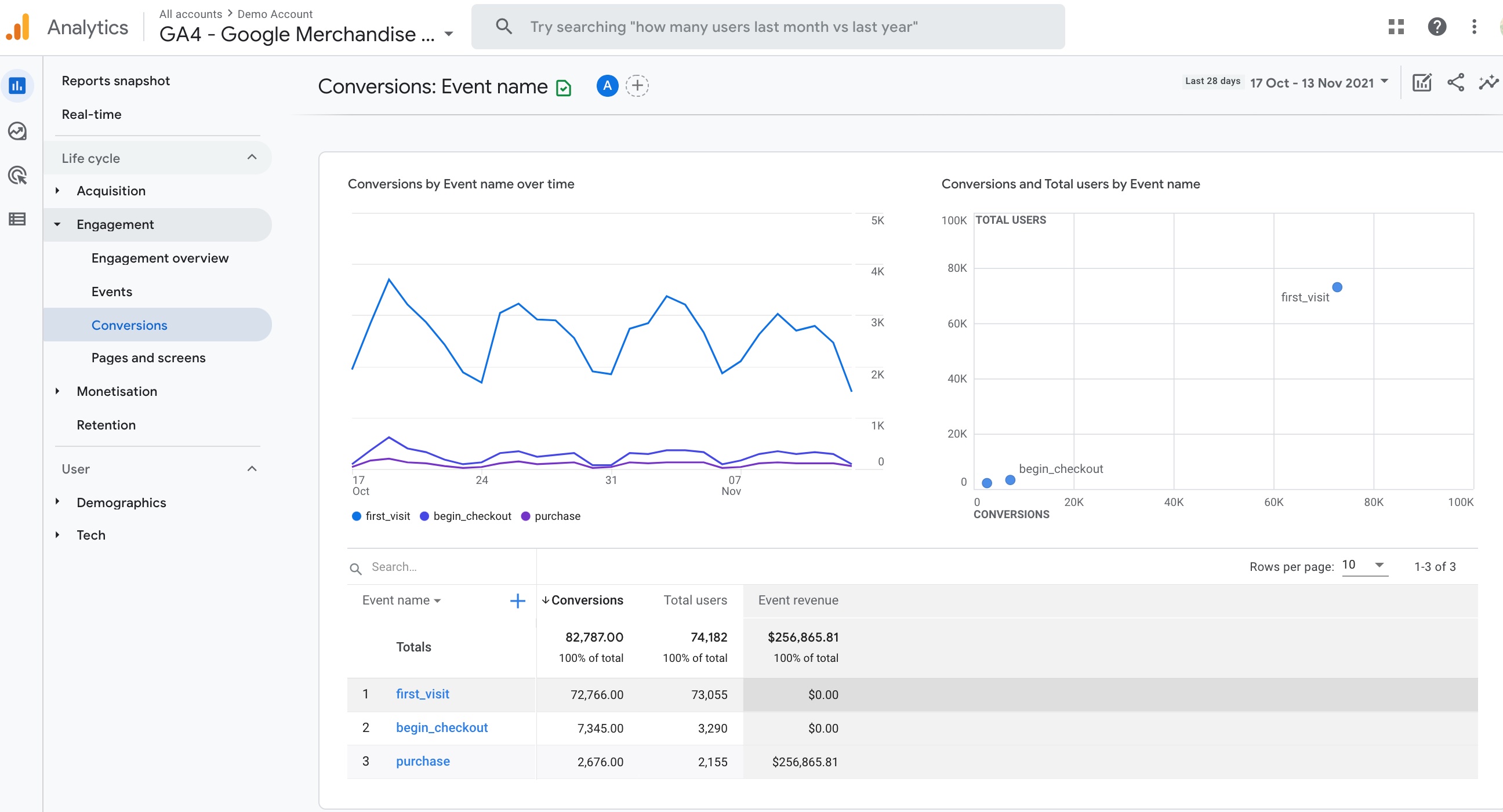8 Ways to Optimize Your B2B SaaS Website for Lead Generation


A well-optimized website can be a powerful tool for generating high-quality leads. Your website serves as the virtual face of your business, and by implementing the right strategies, you can attract and convert potential customers into valuable leads. In this blog post, we will explore effective techniques to optimize your B2B SaaS website for lead generation.
1. Define Your Target Audience
Before diving into website optimization, it's crucial to clearly define your target audience. Understand their pain points, needs, and preferences to align your website content and design accordingly. Create detailed buyer personas to guide your optimization efforts and tailor your messaging to resonate with your ideal customers.
Here's a simplified guide to help you create some fairly detailed buyer personas. They don’t have to be perfect because personas evolve over time, it’s not meant to be a static thing you do once and then it is done.
- Conduct research: Gather information about your existing customers and conduct market research through surveys, interviews, and data analysis.
- Identify demographics: Collect key demographic data such as age, gender, location, job title, industry, company size, and revenue.
- Explore job roles: Understand the responsibilities, goals, challenges, and tasks of your target audience within their organizations.
- Uncover pain points: Identify the frustrations, challenges, and problems your audience faces in their professional lives.
- Identify goals and motivations: Determine the goals and aspirations that drive your target audience in their roles and careers.
- Analyze buying behavior: Examine the decision-making process and factors that influence purchasing decisions.
- Develop persona profiles: Create distinct persona profiles with names, descriptions, and relevant details based on the gathered insights.
- Validate personas: Share the personas with existing customers or your target audience and gather feedback for accuracy and relevance.
- Utilize personas in marketing strategy: Tailor your messaging, content, and campaigns to address the specific needs and preferences of each persona.
Remember to review and update your personas regularly as you gain more insights and data over a longer period of time.
2. Streamline Your User Experience (UX)
A seamless user experience (UX) is key to capturing and retaining leads on your website. Optimize your website's navigation to ensure visitors can easily find the information they're seeking. Make sure your site loads quickly, as slow-loading pages can result in high bounce rates. Implement clear calls-to-action (CTAs) that are strategically placed and visually appealing, guiding visitors towards the next step in the lead generation process.
When it comes to placing calls to action (CTAs) on your website, strategic positioning can significantly impact their effectiveness. Here are some of the best positions for website CTAs you should consider:
- Above the Fold: Placing a CTA above the fold means it is visible to visitors without them needing to scroll down the page. This position is highly effective as it captures immediate attention and encourages action without any additional effort from the user.

- Within Content: Inserting CTAs within your content can be highly effective, especially when they are relevant to the information or message being conveyed. Placing CTAs strategically within blog posts, product descriptions, or service pages can increase engagement and conversions.
- Floating or Sticky CTAs: Floating or sticky CTAs stay visible to visitors even as they scroll down the page. This ensures that the CTA remains within the user's sight at all times, increasing the likelihood of it being noticed and clicked.
- Pop-ups and Slide-ins: Although they can be more intrusive, pop-up and slide-in CTAs can be effective when used thoughtfully. Consider using exit-intent pop-ups or timed slide-ins to present relevant offers or capture attention at critical moments without interrupting the user experience.
- Sidebars: Sidebars offer a consistent and easily accessible location for CTAs. By placing CTAs in a sidebar, you can maintain visibility across multiple pages and provide users with quick access to take action.
- At the End of Content: Placing a CTA at the end of your content, whether it's a blog post or a landing page, allows visitors to engage with your content before being presented with a clear next step. This position works well when users have had a chance to absorb the information and are ready to take action.
- On Navigation Menus: Consider including a CTA within your website's navigation menu. This could be a prominent button or link that leads users directly to a conversion-focused page, such as a pricing or sign-up page.
Remember, the effectiveness of CTAs can vary depending on your specific website, target audience, and goals. It's essential to test different placements, designs, and messaging to determine what works best for your audience and maximises conversions. Additionally, ensure that your CTAs are visually appealing, compelling, and aligned with the user's journey and the desired action you want them to take.
3. Craft Compelling Landing Pages
A landing page is essentially the page a website visitor ‘lands’ on when they first visit your website, it is the first page they see. Contrary to a lot of peoples belief, up to 80% of new website visitors can land on a page other than the homepage when they first visit.

Landing pages play a critical role in lead generation. You should aim to create dedicated landing pages for specific campaigns or offerings, ensuring they are tailored to the target audience's needs and interests. Use persuasive copy and compelling visuals to convey the unique value your B2B SaaS solution offers. Include a lead capture form on your landing page to collect visitor information in exchange for valuable content or resources.
Here's a list of different types of landing pages that you may want to consider building for a B2B SaaS website. Ideally you should have landing pages covering all possible entry points.
1. Solution Landing Pages: These pages highlight specific solutions or features your B2B SaaS product offers. They focus on showcasing the benefits and value proposition of your solution for potential customers.
2. Industry-Specific Landing Pages: Tailored landing pages that address the unique needs and pain points of specific industries. These pages demonstrate how your B2B SaaS solution can solve industry-specific challenges and provide industry-specific benefits.
3. Use Case Landing Pages: These pages showcase how your B2B SaaS product can be applied in various use cases or scenarios. They provide specific examples and success stories to demonstrate the practical applications and results of your solution.
4. Product Demo Landing Pages: Landing pages dedicated to offering product demonstrations or free trials of your B2B SaaS product. They focus on showcasing the functionality and user experience of your solution and encourage visitors to engage with a demo or trial.
5. Pricing and Plans Landing Pages: Pages that outline the different pricing options, plans, and packages available for your B2B SaaS product. These pages provide transparency and help potential customers understand the cost structure and value they can expect from your solution.
6. Comparison Landing Pages: Landing pages that compare your B2B SaaS product with competitors or alternative solutions in the market. These pages highlight the unique advantages and differentiation points of your solution, helping potential customers make informed decisions.

7. Testimonial and Case Study Landing Pages: Landing pages dedicated to showcasing customer testimonials, success stories, and case studies. These pages provide social proof and demonstrate the tangible results and benefits that other businesses have experienced with your B2B SaaS solution.
8. Thought Leadership Content Landing Pages: Landing pages that offer in-depth thought leadership content, such as whitepapers, e-books, or industry reports. These pages provide valuable insights and establish your B2B SaaS company as a trusted authority in the industry.
9. Event or Webinar Landing Pages: Landing pages promoting upcoming events, webinars, or online conferences hosted by your B2B SaaS company. These pages encourage visitors to register, attend, and engage with educational or networking opportunities.
10. Partner or Integration Landing Pages: Pages that highlight strategic partnerships or integrations with other complementary software or service providers. These pages demonstrate the added value and expanded capabilities that your B2B SaaS solution offers through collaborations.
The specific landing pages you choose to build will depend on your target audience, marketing goals, and the unique aspects of your B2B SaaS product. Customizing landing pages to address specific needs, industries, or use cases can help you effectively engage potential customers and drive conversions.
4. Optimize Web Forms for Conversion
Forms are the gateways to capturing lead information. To maximize conversion rates, keep your forms concise, asking for only the essential information. Minimize friction by reducing the number of form fields and using smart features like auto-fill. Experiment with different form designs, placements, and form submission triggers to find what works best for your target audience.
You should have a number of different lead capture forms on your website for the different reasons someone is interested in visiting your site. Here are the most common different types of lead capture forms that you can have on your website:
- Newsletter Subscription Form: Offer visitors the option to subscribe to your email newsletter to receive regular updates, industry news, promotions, and valuable content.
- Contact Form: Include a contact form on your website to allow visitors to reach out to you with inquiries, questions, or requests for more information about your products or services.
- Demo or Consultation Request Form: Provide a form specifically for visitors interested in scheduling a product demo or consultation with your sales team to explore your offerings in more detail.
- eBook or Resource Download Form: Offer valuable resources such as eBooks, whitepapers, guides, or templates, and require visitors to provide their contact information in exchange for accessing the content.
- Webinar or Event Registration Form: If you host webinars, workshops, or events, create registration forms to capture attendee information, including their name, email address, and any additional details required for the event.
- Free Trial or Product Evaluation Form: If you offer a free trial or product evaluation period, design a form to capture user information before granting access to the trial version or evaluation.

- Feedback or Survey Form: Gather valuable insights by including feedback or survey forms on your website. Ask visitors to share their opinions, preferences, or suggestions to improve your products, services, or website experience.
- Contest or Giveaway Entry Form: If you run contests or giveaways, create entry forms that collect participant information, such as name, email address, and any other relevant details for the specific promotion.
- Quotation or Quote Request Form: If you offer customized pricing or quotes based on customer needs, include a form where visitors can request a quotation or quote for your products or services.
- Job Application Form: If you have a career or job opportunities section on your website, provide a form for job seekers to submit their resumes or complete applications online.
Remember to strike a balance between the amount of information you request in your lead capture forms and the value you provide in return. Keep forms user-friendly, concise, and aligned with the specific conversion goals you want to achieve.
5. Implement AI Live Chat and Chatbots
Engaging visitors in real-time can significantly boost lead generation. Implement live chat or chatbot functionalities on your website to provide immediate assistance and capture leads who have questions or need clarification. Integrate chatbots with a knowledge base to offer self-service options and automate lead qualification to identify potential high-value leads.
Here are some well-known AI chatbot and live chat platforms. They vary in price and functionality so have a look through and you can see if any fit the needs and requirements of your own B2B SaaS company.
Chatbot Platforms:
- Chatfuel
- ManyChat
- Dialogflow by Google Cloud
- IBM Watson Assistant
- Amazon Lex
- Microsoft Bot Framework
- Chatbot.com
- LivePerson
- Botsify
- Tars
Live Chat Platforms:
These platforms offer various features, integrations, and pricing options. It's important to evaluate your specific requirements and consider factors such as ease of use, scalability, customization options, and customer support when choosing the right platform for your business.
6. Leverage Social Proof
Social proof refers to the psychological phenomenon where people look to others for guidance and validation when making decisions. In the context of marketing and business, social proof refers to the influence and impact that the actions, opinions, and recommendations of others have on our own decision-making.

Building trust is vital for B2B SaaS lead generation. Display customer testimonials, case studies, and success stories prominently on your website. Highlight recognizable logos of well-known clients or partners to enhance credibility. Incorporate social proof elements, such as user reviews or ratings, to instill confidence in potential leads considering your solution. Here's a bullet point checklist for social proofing your SaaS website:
- Testimonials: Display customer testimonials prominently on your website. Include testimonials that highlight specific benefits, outcomes, or positive experiences with your product or service.

-
- Case Studies: Showcase detailed case studies that demonstrate how your product or service solved a specific problem or delivered measurable results for your clients. Include before-and-after scenarios and data-driven outcomes.
- Reviews and Ratings: Feature customer reviews and ratings on your website, especially if you operate in an industry where reviews play a significant role. Consider integrating review platforms or embedding review snippets from trusted sources.

- Client Logos and Badges: Display logos or badges of well-known clients or partners to build credibility and trust. Highlight recognizable brands that your business has worked with or been endorsed by.
- User-Generated Content: Incorporate user-generated content such as testimonials, reviews, or social media posts where customers mention or interact positively with your brand. This adds authenticity and shows that real people are satisfied with your offerings.
- Awards and Certifications: Showcase any industry awards, certifications, or accolades your business has received. This demonstrates recognition and expertise within your field, reinforcing trust in your brand.
- Influencer Endorsements: If relevant to your industry, include endorsements or testimonials from influencers or thought leaders in your niche. Their support can greatly influence your audience's perception of your brand.
- Social Media Engagement: Display social media follow counts, likes, shares, and comments on your website to indicate a strong social media presence and active engagement with your audience.
- Trust Seals and Security Certificates: Incorporate trust seals and security certificates on your website to assure visitors that their personal information is secure and that your site is trustworthy.
- Statistics and Data: Include relevant statistics or data that support the effectiveness, impact, or success of your product or service. Use numbers and figures to quantify results and provide evidence of your value proposition.
- Testimonial Videos: Supplement written testimonials with video testimonials from satisfied customers. Video testimonials can be more compelling and engaging, allowing potential customers to see and hear firsthand accounts of positive experiences.
- Media Mentions and Press Coverage: Showcase any media mentions, press coverage, or features your business has received. Include logos or links to news articles or publications where your brand has been featured.
Remember, social proofing your website is an ongoing process. Regularly update and refresh your social proof elements to reflect the latest testimonials, reviews, or achievements. Aim for a diverse range of social proof types to appeal to different preferences and build credibility with your target audience.
7. Optimize for Search Engines (SEO)
To attract organic traffic and generate leads, optimize your website for search engines. This means starting by conducting thorough keyword research to understand the search terms your target audience uses.
SEO involves optimizing your website's meta tags, headings, and content with relevant keywords to improve visibility in search engine results pages (SERPs). Here's a five-point checklist to optimize your website for search engines:
- Keyword Research: Conduct thorough keyword research to identify the specific keywords and phrases your target audience uses when searching for products or services related to your business. Use keyword research tools like SEMRush to find relevant and high-volume keywords. Incorporate these keywords naturally into your website's content, headings, meta tags, and URLs.
- On-Page Optimization: Ensure that your website's on-page elements are optimized for search engines. This includes optimizing meta tags (title tags and meta descriptions) with relevant keywords and compelling, click-worthy descriptions. Use descriptive and keyword-rich headings (H1, H2, etc.) to structure your content. Optimize your images by adding alt tags that describe the image content using relevant keywords.
- Quality Content Creation: Create high-quality, informative, and engaging content that is valuable to your target audience. Develop a content strategy that incorporates relevant keywords and covers topics of interest to your audience. Regularly publish fresh and unique content, such as blog articles, guides, or whitepapers, to establish your website as a valuable resource in your industry. Aim for longer-form content that provides in-depth information and satisfies user intent.
- Website Speed and Mobile Optimization: Improve your website's loading speed to enhance the user experience and meet search engine expectations. Compress images, minify CSS and JavaScript files, and utilize caching techniques to reduce page load times. Additionally, ensure your website is mobile-friendly and responsive, as mobile optimization is crucial for both user experience and search engine rankings.
- Link Building and Backlinks: Earn high-quality backlinks from reputable and relevant websites to improve your website's authority and visibility in search engine results. Focus on building natural and organic backlinks through techniques such as guest blogging, creating valuable content that others want to share, and engaging with industry influencers. Monitor your backlink profile and disavow any spammy or low-quality backlinks that could harm your search engine rankings.
Remember, search engine optimization (SEO) is an ongoing process. Continuously monitor your website's performance, analyze data from search engine analytics tools, and make adjustments as needed. Stay up-to-date with SEO best practices and algorithm updates to ensure your website remains optimized for search engines.
8. Implement Lead Tracking and Analytics
To continuously improve your lead generation efforts, leverage lead tracking and analytics tools. Use website analytics to gain insights into visitor behavior, traffic sources, and conversion rates. Set up conversion tracking to monitor the performance of landing pages and campaigns. Apply the data-driven insights obtained to refine your website optimization strategy and drive higher lead conversions.

You can use free tools like Google Analytics for your website analytics and conversion tracking. To implement Google Analytics 4 (GA4) on your website, follow these step-by-step instructions:
Step 1: Create a Google Analytics 4 Property
- Sign in to your Google Analytics account or create a new one at analytics.google.com.
- Click on the "Admin" tab in the lower-left corner.
- In the "Property" column, click on "Create Property."
- Select the "Web" option.
- Fill in the required information such as the property name, website URL, and industry category.
- Enable or disable data sharing options as per your preferences.
- Click on "Create" to create your GA4 property.
Step 2: Set Up Data Collection
- After creating the property, you will be provided with a Measurement ID (starts with "G-").
- Copy the Measurement ID as you will need it in the following steps.
Step 3: Add GA4 Tracking Code to Your Website
- Add the GA4 tracking code snippet to all the pages of your website. Place the code immediately after the opening `<head>` tag in your HTML.
- Replace "GA_MEASUREMENT_ID" in the tracking code with your Measurement ID.
- Save the changes and publish the updated code on your website.
Step 4: Verify Implementation
- 1. Once the tracking code is added, go back to your Google Analytics account.
- 2. Under the "Admin" tab, click on "Data Streams" under the "Property" column.
- 3. Verify that your website's data stream is active and receiving hits. This may take some time, so be patient.
Step 5: Configure Data Settings and Events
- Under the "Admin" tab, click on "Data Streams" under the "Property" column.
- Select your website's data stream.
- Configure data settings such as data collection options, enhanced measurement, and data retention as per your requirements.
- Set up custom events, if necessary, to track specific user interactions or actions on your website.
Step 6: Explore Reporting and Analysis
- Once data starts flowing into your GA4 property, you can explore the reporting and analysis features in your Google Analytics account.
- Navigate to the "Reports" tab to access various reports and insights about your website's performance, user behavior, conversions, and more.
Remember to regularly check and update your GA4 implementation as your website evolves or if there are any changes in tracking requirements. Explore the documentation and resources provided by Google Analytics for more detailed information and advanced configurations related to GA4.
HubSpot is another popular marketing tool used for analytics and lead generation tracking.To install the HubSpot tracking code on your website, follow these step-by-step instructions:
Step 1: Access your HubSpot Account
- Sign in to your HubSpot account at app.hubspot.com.
Step 2: Retrieve the HubSpot Tracking Code
- In the HubSpot dashboard, click on the "Settings" icon (gear icon) in the main navigation menu.
- In the left sidebar, navigate to "Tracking & Analytics" under the "Website" section.
- Click on "Tracking Code."
- Copy the HubSpot tracking code snippet provided.
Step 3: Add the Tracking Code to Your Website
- Open the HTML code of your website's template or theme in a text editor or content management system (CMS).
- Locate the `<head>` section of your website's HTML code.
- Paste the HubSpot tracking code snippet just before the closing `</head>` tag.
- Save the changes and publish the updated code on your website.
Step 4: Verify Installation
- Once the tracking code is added, go back to your HubSpot account.
- Return to the "Tracking Code" page (Settings > Tracking & Analytics > Tracking Code).
- Verify that the tracking code is active and the status shows as "Tracked" or "Verified."
- HubSpot may provide additional verification instructions, such as visiting a specific URL, to ensure the code is installed correctly. Follow any provided instructions to complete the verification process.
Step 5: Test Tracking
- Open your website in a browser.
- Navigate to different pages and perform various actions, such as submitting a form or clicking on links.
- Return to your HubSpot account and access the relevant tracking reports or analytics dashboards to verify that the tracking is working correctly. This may include checking page views, conversions, or other metrics.
Note: The exact steps may vary slightly depending on your specific HubSpot account setup and the CMS or website platform you are using. Refer to HubSpot's documentation or consult their support resources for more detailed instructions tailored to your specific situation.
By following these steps, you can successfully install the HubSpot tracking code on your website and begin tracking visitor activity and interactions to gain valuable insights and leverage HubSpot's marketing and sales tools effectively.
Summary
Done right, a B2B SaaS website can help you scale and grow a business rapidly. Optimizing your website for lead generation requires a comprehensive approach that focuses on understanding your target audience, streamlining user experience (UX), and implementing effective lead capture techniques.
By applying these strategies, you can create a website that not only attracts relevant traffic but also converts visitors into valuable leads. Continuously monitor and refine your optimization efforts based on analytics to ensure ongoing success in generating leads for your B2B SaaS business.
Find a B2B SaaS Expert
We've collected a directory of B2B SaaS experts and agencies that we've reviewed and categorised based on service and specialism for your review.







.png)






